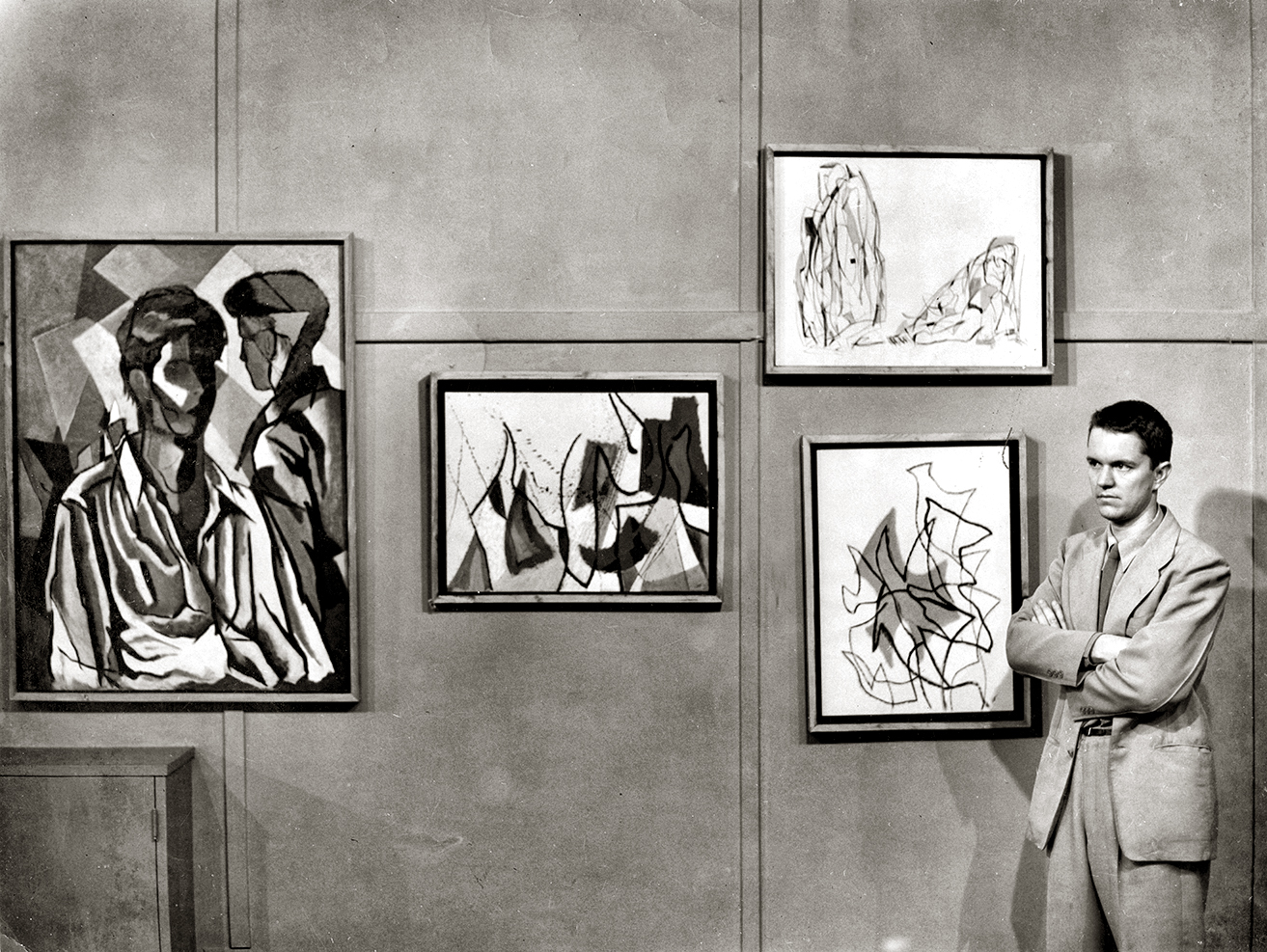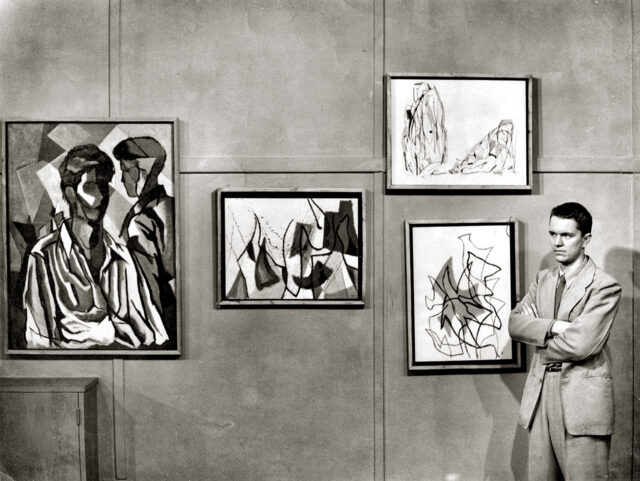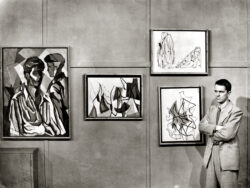Summer 2021
Celebrating a Master’s Centennial
John Clemmer at 100
Published: May 27, 2021
Last Updated: August 31, 2021

Kimberly and John Ed Bradley
John Clemmer, Circles—Homage to JMWT [James Mallord William Turner], 1973. Oil on Masonite
From his student days at the New Orleans School of Art through his long career as a working artist and educator, Clemmer produced a diverse body of work. His mature works are well-planned, cerebral, compositional arrangements characterized by precision and orderliness. These range from figural art to abstract and non-objective subjects, as well as three-dimensional works, including religious sculptures for synagogues. Other works were inspired by his travels in Europe—particularly Greece and Italy—and by rural Wisconsin.

Clemmer at one of his early solo exhibitions, 1949. The Historic New Orleans Collection, gift of John F. Clemmer.
Although Clemmer rendered few scenes of New Orleans, his life in the city was central to his work. It is particularly fitting that this exhibition of his art be held at THNOC’s new exhibition center on Royal Street, just two blocks from where his career began at the Arts and Crafts Club of New Orleans. Clemmer is the only artist to have been a student, teacher, and director of the Club’s School of Art. After its demise in 1951, he taught at the Tulane University School of Architecture and then chaired the Newcomb Department of Art. A reserved man possessed of a generous spirit, he provided transformative opportunities for many people, including this author, throughout his life.
The vast body of Clemmer’s work—whether still life or non-representational—displays his interest in geometry and nature. A sense of quiet composure and serenity pervades his oeuvre, though some pieces suggest the probability of suppressed turmoil beneath the surface. He continuously developed new approaches to his art and assimilated new ideas as he developed his personal artistic voice. In doing so, he frequently revisited and reinterpreted earlier themes and subjects. Clemmer synthesized his awareness of art trends throughout the 1940s to the 1960s and his association with a wide range of working artists into a singular voice. More at hnoc.org.
